This article introduces 3 methods to effortlessly translate Chinese to English in Excel. Master data, finance, and collaboration. Maximize your spreadsheet potential with our expert guide.
Excel serves as a vital tool for data management. Translation within Excel has become essential for effective communication across language barriers. This article discusses the significance of translating Excel, focusing on the necessity of seamlessly translating Chinese Excel documents to English. Explore three methods to facilitate this process, ensuring efficient collaboration and understanding in the international business sphere.
I. 3 Methods To translate Chinese to English in Excel
Method 1: Translate the Excel File From Chinese to English Using PDFelement
PDFelement Pro is a flexible PDF editing program that makes jobs like Excel translation easier. Its advantages include smooth PDF conversion to Excel while keeping formatting and data integrity. Users may update and retrieve tabular data, making it an effective tool for dealing with Excel files contained in PDF documents.
Here is a step-by-step guide on how to translate an Excel file from Chinese to English using PDFelement:
Step1Create a PDF from the Excel file using PDFelement.
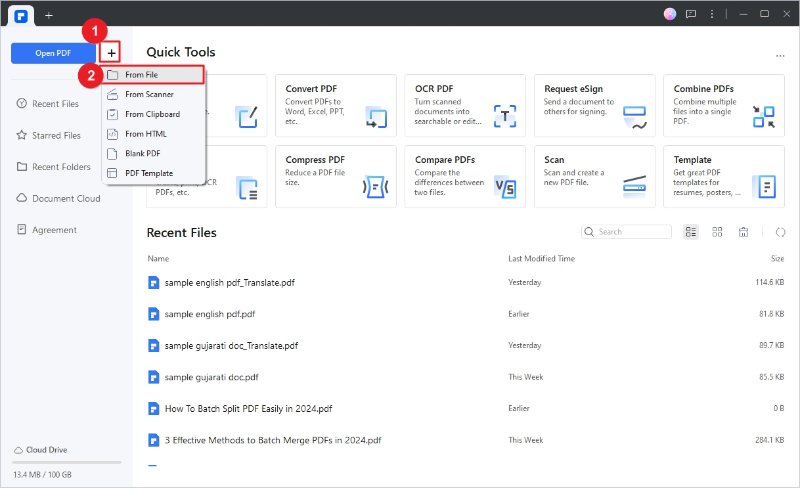
- Launch PDFelement on your device
- Go to "+" > "From File" and locate the Excel file in your local drive.
- PDFelement will create a PDF from the Excel file.
Step2Use the "Translate PDF" feature to translate the entire created PDF from Chinese to English
- Open PDFelement and go to the "Home" tab.
- Click on the "Open" button and select the PDF file you created from the Excel file.
- Once the PDF is open, go to the "Tool" tab and select "Translate" from the menu.
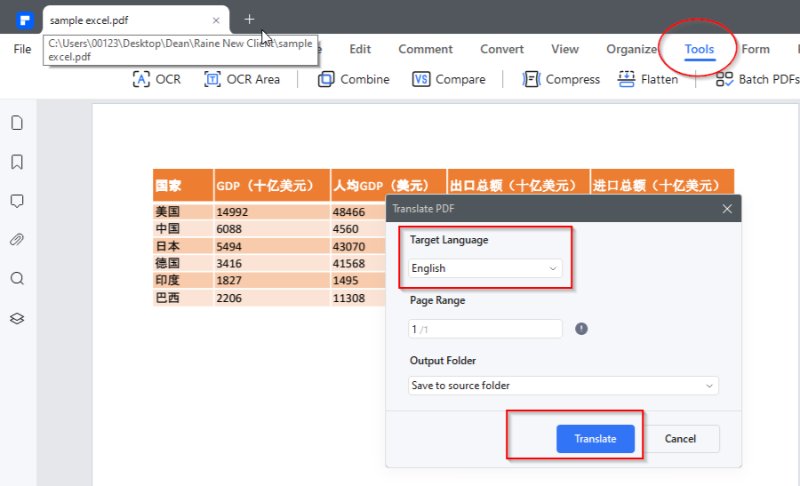
- In the translation settings, choose "Chinese" as the source language and "English" as the target language.
- Click on the "Translate" button, and PDFelement will automatically translate the entire PDF from Chinese to English while maintaining formatting.
Step3Using the "Convert" feature to convert the English PDF back to Excel format
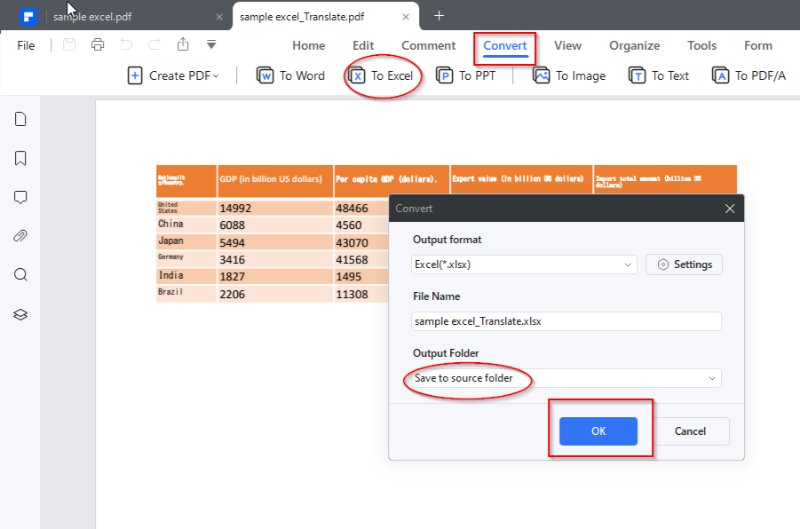
- After translating the PDF, go to the "Home" tab in PDFelement.
- Click on the "Convert" button and choose "To Excel" from the options.
- Select the destination folder where you want to save the converted Excel file and click on the "OK" button.
- PDFelement will convert the English PDF back to Excel format, and you'll find the translated file in the specified location.
Method 2: Use Microsoft Excel To Translate Chinese to English in Excel
Microsoft Excel includes built-in translation capabilities that enable users to translate text within cells. Users can pick a range of cells, and then select the "Translate" option and the appropriate language. Excel utilizes the Microsoft Translator service for translations. This approach works well for small to medium-sized datasets, but bigger files may need to be handled manually.
The "Translate" command has various advantages for users, including:
- Effortless Translation: Users may translate text within Excel without using external translation tools or services. It simplifies the procedure, particularly when working with multilingual data.
- Time Savings: By applying the "Translate" command, users save time that would otherwise be spent copying and pasting text onto external translation programs. It offers a quick and effective approach to working with text in many languages.
- Increased Accuracy: Fewer opportunities for mistakes to be introduced during the copy-paste process exist because the translation is completed inside Excel. This keeps the translated text accurate.
- Convenience: Users may work with data in many languages without leaving the Excel interface. It's especially helpful for cross-border cooperation, data analysis, and any situation involving multilingual material.
To sum up, Microsoft Excel's "Translate" function improves the user experience by providing a simple, all-in-one solution for language translation, which raises accuracy and efficiency while managing multilingual data.
How to translate an Excel file from Chinese to English using Microsoft Excel:
Step 1: Open Excel Workbook
- Open Microsoft Excel and select the workbook that contains the text you want to translate.
Step 2: Select the text
- Review the content of the Excel file and identify the cells or columns that contain Chinese text that needs translation.
Step 3: Navigate to the "Review" tab
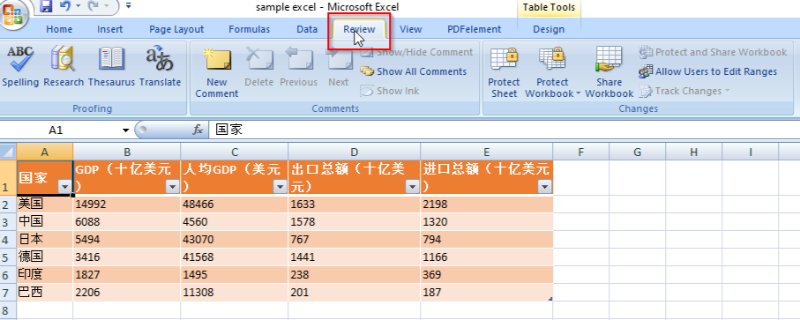
- Find and select the "Review" tab from the ribbon at the top of the Excel window.
Step 4: Locate the "Translate" command
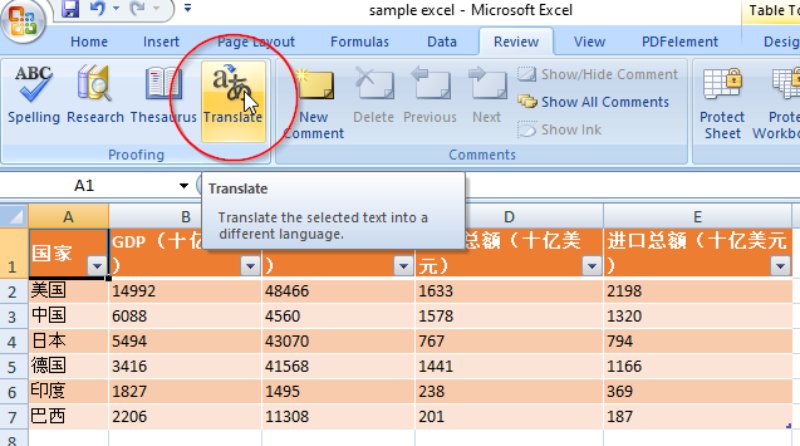
- Find the "Research" command or a similar option in the "Review" tab. It could be in the category of language tools.
Step 5: Choose Translation Language
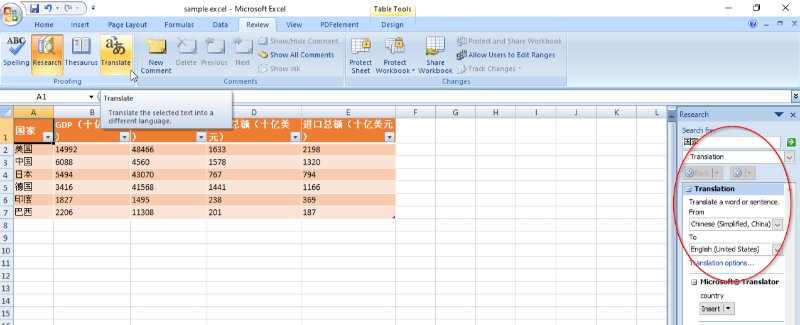
- A sidebar or dialogue box will appear. Choose the desired language for translation from the list of options.
Step 6: Initiate Translation
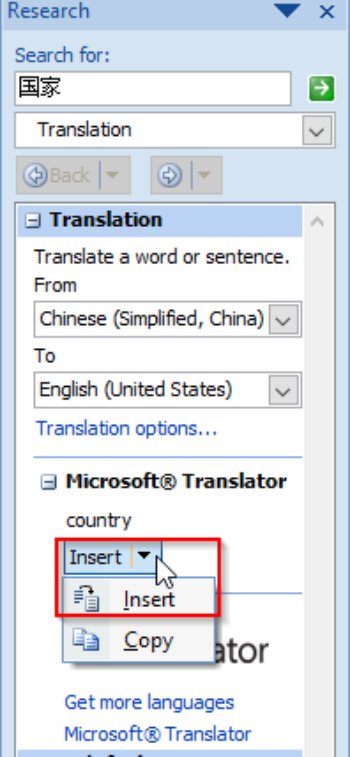
- To begin the translation, click the "Insert" or equivalent button. Excel will convert the selected text using its translation engine.
Step 7: Review and confirm
- Once the translation is complete, review the translated text to ensure accuracy.
Step 8: Close the Translation Dialog
- To return to your Excel worksheet, close the translation dialogue box or sidebar.
Step 9: Optional: Edit Translated Text
- If necessary, make any manual adjustments or edits to the translated text directly in the Excel cells.
Step 10: Save Your Workbook
- Make sure you save your Excel workbook after you have completed the translation and made any necessary changes.
The general procedures for utilizing Excel's translate commands serve as the foundation for this tutorial. Depending on your Excel version and the features that are available to you, the actual steps may change. If there are specific steps you'd like to know more about or if you encounter any unique features in the tutorial you provided, feel free to share more details for a more tailored guide.
Method 3: Google Translate for Chinese to English in Excel
Google Translate is a web-based translation service that can handle a variety of file types, including Excel files. Users may submit Excel files directly to Google Translate, choose their source and destination languages, and obtain a translated version. Google Translate uses machine learning to translate, giving a rapid and effective option for language conversion.
Key features of Google Translate include:
- Text Translation: Users can enter text in one language, and Google Translate will offer an equivalent translation in the chosen target language.
- Document Translation: Google Translate can translate complete documents from one language to another while keeping the original layout.
- Website Translation: Users can translate entire web pages by entering the URL into Google Translate, which makes the content available in their preferred language.
- Speech Translation:Google Translate features speech translation, allowing users to speak in one language and receive a spoken translation in another one.
- Offline Translation: Users can download language packs for offline use, which allows them to translate without an active internet connection.
It is crucial to remember that while Google Translate is a strong tool, translations are not always accurate, and accuracy varies based on the intricacy of the text and the languages used. It is frequently used for basic communication and comprehension, but for crucial or complex translations, human translation services are advised.
Using Google Translate Chinese to English Excel
Step 1: Open Your Web Browser:
- Launch your preferred web browser and go to the Google Translate website.
Step 2: Upload your Excel file:
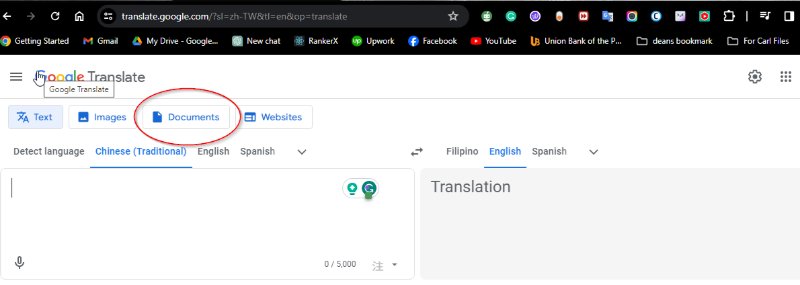
- In Google Translate, click on the "Documents" option (icon of a document) in the left sidebar.
Step 3: Choose File to Translate:
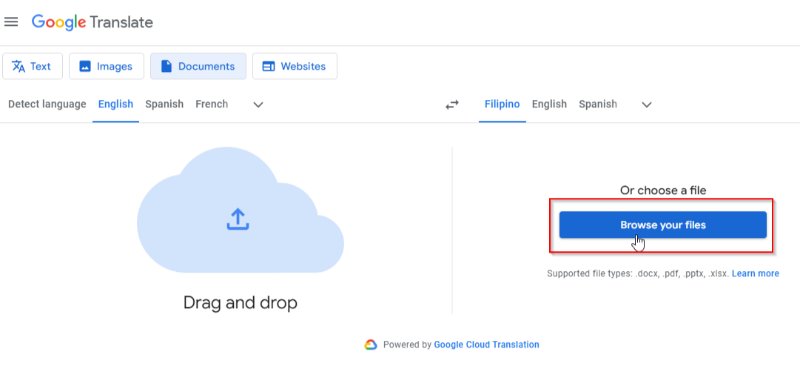
- Click on "Browse your computer" and select the Excel file you want to translate from your local storage.
Step 4: Select Languages:

- Choose the source language (Chinese) and the target language (English) from the drop-down menus.
Step 5: Initiate Translation:
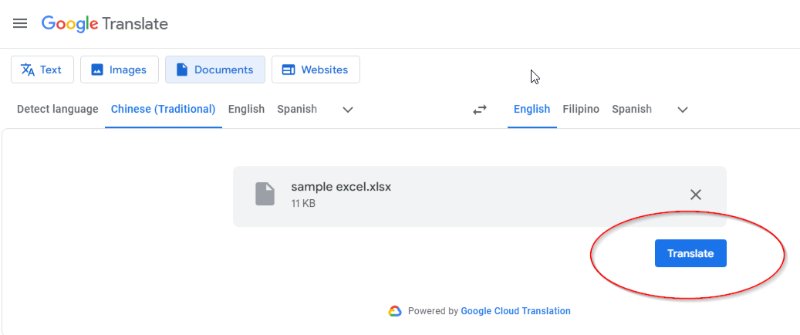
- Click on the "Translate" button to start the translation process. Google Translate will analyze the content of the Excel file and provide a translated version.
Step 6: Review Translation:
- Once the translation is complete, review the translated text. Google Translate will display the translated content in a new window.
Step 7: Download Translated File (Optional):
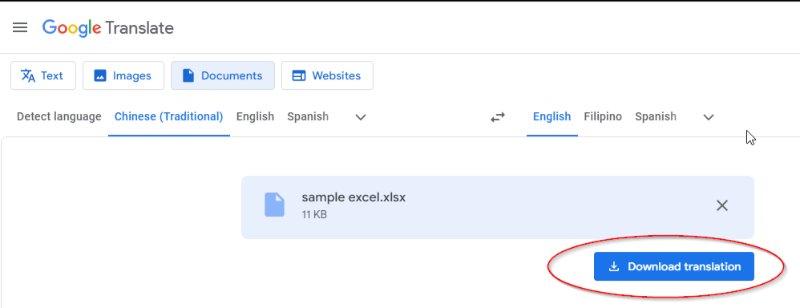
- If you're satisfied with the translation, you can download the translated Excel file by clicking on the download icon.
Step 8: Adjust formatting (if needed):
- Open the translated Excel file in Microsoft Excel and adjust formatting if necessary. This may include adjusting column widths, font styles, or other formatting preferences.
Step 9: Save your translated Excel file:
- Save the translated Excel file to your computer or cloud storage to retain the translated content.
For precise results, Google Translate might not capture specialized terms accurately, so you may need to review and edit the translation.
II. Comparative Analysis of Translating Chinese to English in Excel using PDFelement, Excel, and Google Translate
Translating Excel files from Chinese to English is a typical process that may be accomplished using a variety of methods. This comparison review looks into the efficacy and functionality of three common programs for this purpose: PDFelement, Microsoft Excel, and Google Translate.
Easy to Use:
- PDFelement: PDFelement offers an intuitive and user-friendly interface and allows you to translate the entire Excel with just one click.
- Microsoft Excel: Includes built-in translation tools generally applied cell-by-cell. You need to use the "Translation" command on each of the cells one by one.
- Google Translate: Easy to use, particularly for those familiar with the web platform.
Accuracy:
- PDFelement: High accuracy with AI translation feature.
- Microsoft Excel: Relatively accurate, using the Microsoft Translator service.
- Google Translate is well-known for its excellent accuracy, which is achieved by powerful machine-learning algorithms.
Formatting Preservation:
- PDFelement: Excel in preserving the layout, fonts, and formatting, resulting in a translated Excel file that closely resembles the original.
- Microsoft Excel: Preserve the formatting well.
- Google Translate: Provide translated text, but the structure and formatting might be lost.
Conclusion
Choosing the right tool depends on the user's specific needs. If the primary task is translating text within Excel files, Microsoft Excel and Google Translate are more straightforward and effective options. PDFelement may be suitable for users who need to work extensively with PDF's but may involve additional steps for Excel translation.


